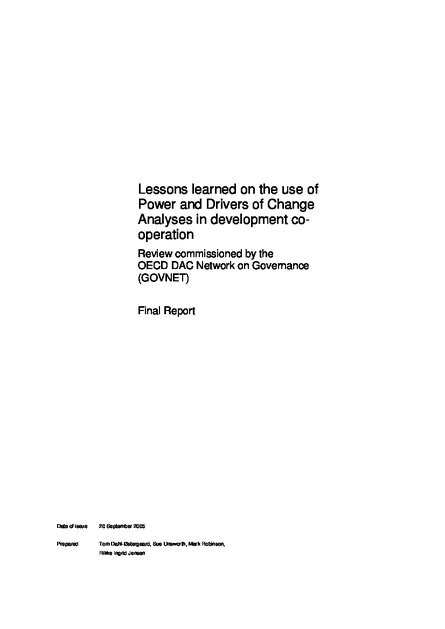
This review compares and contrasts different donor approaches to conducting Power and Drivers of Change (DOC) analysis, and looks at what is being done with the findings, in order to learn lessons for future work. It draws mainly on studies conducted in four countries – Bangladesh, Bolivia, Kenya, and Tanzania – as basis for deriving findings and recommendations for this type of work. Power and DOC analysis operates at the cutting edge of development. There is strong interest among donors, NGOs and research institutions in deepening understanding of the political and institutional factors that shape development outcomes. All donors are feeling their way on how to proceed. While there is no agreement on what conceptual framework to employ, a common framework may not be desirable since a variety of approaches may generate useful contrasts and insights. There are important commonalities, centred on the relationship between political factors, economic conditions, and institutions. But donors are employing different analytical lenses. Sida’s approach tends to gravitate towards a focus on the links between human rights, democracy and poverty reduction2 ; the World Bank on the role of formal public institutions and informal practices within these; DFID on structural and institutional factors that support or impede poverty reduction; and the Netherlands Ministry of Foreign Affairs on state stability.